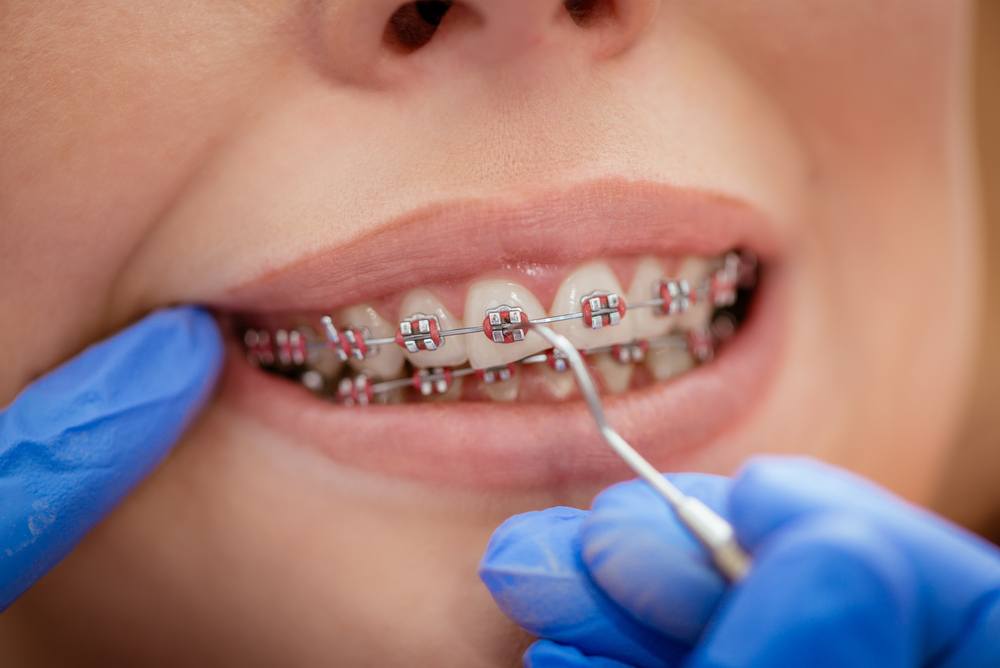What Sets Cumming Braces and Aligners In Addition To Other Orthodontic Treatments
What Sets Cumming Braces and Aligners In Addition To Other Orthodontic Treatments
Blog Article
Comprehensive Overview to Orthodontics Procedures for Correcting Oral Imbalances
Recognizing the complexities of each treatment, including their mechanisms, advantages, and prospective drawbacks, is critical in making informed choices concerning one's orthodontic treatment. As we browse with the detailed overview to orthodontic procedures for remedying oral misalignments, the detailed details of each approach will unfold, losing light on the course toward a functional and unified oral positioning.
Orthodontic Procedures Introduction

Along with typical dental braces and clear aligners, orthodontists might also advise various other interventions like headgear, palatal expanders, or retainers to resolve particular placement issues (cumming aligners). These procedures are tailored to every individual's special requirements and may include a mix of treatments to attain the wanted outcomes. Routine adjustments and monitoring are critical components of orthodontic treatment to guarantee progress gets on track and to make any kind of necessary modifications in the process. By undertaking orthodontic treatments, clients can not only attain a straighter grin however likewise boost their general oral health and feature.
Traditional Dental Braces: How They Function
When thinking about orthodontic therapies for dental imbalances, standard braces stick out as a reliable approach for correcting teeth placing. Traditional braces consist of brackets, cables, and bands that interact to use continual stress on the teeth, gradually moving them into the desired alignment. The brackets are affixed to the teeth utilizing a special adhesive, and the cables are threaded with the braces. By changing the stress of the cables, orthodontists can manage the instructions and pressure put on each tooth, assisting them right into appropriate placement gradually.
As pressure is used to the teeth through the dental braces, the bone surrounding the teeth is improved to sustain the brand-new tooth positions. People will require routine adjustments at the orthodontist's workplace to ensure the dental braces proceed to apply the correct stress for effective teeth motion.
Invisible Aligners: Benefits And Drawbacks
These clear, customized trays are essentially unseen when used, making them an enticing option for individuals seeking a much more visually pleasing orthodontic therapy. Patients can get rid of the aligners before eating or cleaning their teeth, lowering the threat of food obtaining stuck in the device and streamlining the cleaning process.

Surgical Orthodontic Options
Surgical treatments in orthodontics present viable choices for dealing with intricate dental imbalances that may not be successfully solved via conventional orthodontic treatments. While conventional braces and invisible aligners can fix many orthodontic problems, certain situations call for surgical intervention to accomplish optimum results. Surgical orthodontic choices are generally advised for severe malocclusions, substantial jaw discrepancies, and cases where the discover here underlying bone structure requires alteration to achieve appropriate placement.
One common surgical orthodontic procedure is orthognathic surgery, which involves repositioning the jaws to remedy useful issues such as difficulty speaking or chewing. This surgical treatment is often carried out in partnership with an orthodontist that aids straighten the teeth prior to and after the procedure. Surgical orthodontics may likewise entail treatments to reveal influenced teeth, remove excess periodontal tissue, or improve the jawbone to create a more harmonious facial profile.
Before considering surgical orthodontic choices, individuals go through a comprehensive assessment to figure website link out the requirement and prospective advantages of such interventions. cumming orthodontics. While surgical procedure might appear challenging, it can dramatically boost both the feature and aesthetics of the smile in cases where conventional orthodontic treatments fall short
Retainers and Post-Treatment Care

Failure to comply with post-treatment treatment instructions can result in relapse, where the teeth progressively move back in the direction of their initial positions. Constant retainer wear, excellent oral health, and regular dental exams are important for keeping the outcomes achieved with orthodontic surgical procedure and guaranteeing the lasting stability of the fixed oral placement.
Conclusion
In conclusion, orthodontic procedures use numerous alternatives for remedying dental imbalances. Surgical orthodontic choices are readily available for much more severe misalignments. Generally, orthodontic click for more treatments can properly boost oral wellness and visual appearance.
As we navigate through the comprehensive guide to orthodontic treatments for remedying oral misalignments, the complex details of each approach will certainly unravel, dropping light on the path toward a practical and harmonious dental alignment. - cumming aligners
One of the most usual orthodontic therapies is the usage of dental braces, which are composed of metal braces and cords that apply gentle stress to slowly change teeth right into the preferred setting.When thinking about orthodontic therapies for oral misalignments, typical dental braces stand out as a time-tested technique for dealing with teeth placing. Furthermore, unseen aligners may not be appropriate for complex orthodontic problems that require even more considerable teeth movement, as they are typically advised for moderate to modest situations. Retainers are custom-made orthodontic tools created to hold teeth in their remedied positions after the conclusion of orthodontic therapy.
Report this page